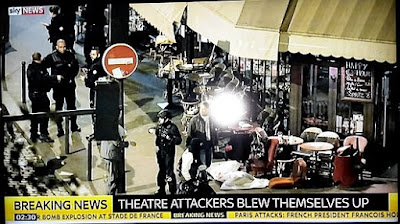A sober and detailed analysis by David French of National Review provides facts and analysis on President Trump's executive order.
Key highlights:
- "Trump is improving security screening and intends to admit refugees at close to the average rate of the 15 years before Obama’s dramatic expansion in 2016. Obama’s expansion was a departure from recent norms, not Trump’s contraction.
- "The order imposes a temporary, 90-day ban on people entering the U.S. from Iraq, Syria, Iran, Libya, Somalia, Sudan, and Yemen. These are countries either torn apart by jihadist violence or under the control of hostile, jihadist governments.
- "The plain language of the order doesn’t apply to legal permanent residents of the U.S., and green-card holders have been through round after round of vetting and security checks. The administration should intervene, immediately, to stop misapplication.
- "You can read the entire executive order from start to finish, reread it, then read it again, and you will not find a Muslim ban. It’s not there. Nowhere.
- "Trump’s order was not signed in a vacuum. Look at the Heritage Foundation’s interactive timeline of Islamist terror plots since 9/11. Note the dramatic increase in planned and executed attacks since 2015."
Dr. Timothy R. Furnish notes in a Facebook post that the wording of the executive order specifically provides for admittance of Muslims, when they are a minority under threat of persecution:
SecState is directed to "prioritize religious claims made by individuals on the basis of religious-based persecution, provided that the religion of the individual is a minority religion in the individual’s country of nationality.” Pray tell, how is that a "ban on Muslims?" Answer: it's not.
Members of Muslim minority sects (Isma'ilis, Alawis, Druze, etc.) being persecuted in Sunni countries will be allowed in; Sunnis persecuted in, say, Iran or Iraq will be; Christians in Iraq, Syria, etc., will be, yes. But there is no "ban on Muslims."
And, President Trump is vigorously defending his policy:
“The seven countries named in the executive order are the same countries previously identified by the Obama administration as sources of terror...” — a fact underreported by the mainstream media.
“To be clear, this is not a Muslim ban, as the media is falsely reporting. This is not about religion — this is about terror and keeping our country safe."
"There are over 40 different countries worldwide that are majority Muslim that are not affected by this order.”
“America is a proud nation of immigrants and we will continue to show compassion to those fleeing oppression, but we will do so while protecting our own citizens and border.”
Trump’s Executive Order on Refugees — Separating Fact from Hysteria
by David French, National Review, January 28, 2017:
To read the online commentary, one would think that President Trump just fundamentally corrupted the American character. You would think that the executive order on refugees he signed yesterday betrayed America’s Founding ideals. You might even think he banned people from an entire faith from American shores.
Just look at the rhetoric. Here’s Chuck Schumer:
Chuck Schumer of Trump's 'extreme vetting' Exec. Order: "Tears are running down the cheeks of the Statue of Liberty tonight."
— Kyle Griffin (@kylegriffin1) 7:06 PM - 27 Jan 2017
If you thought only Senator Schumer saw tears in Lady Liberty’s eyes, think again. Here’s Nancy Pelosi:
Pelosi blasts Trump's 'extreme vetting' Exec. Order: "This Administration has mistaken cruelty for strength and prejudice for strategy."
— Kyle Griffin (@kylegriffin1) 7:19 PM - 27 Jan 2017
CNN, doing its best Huffington Post impersonation, ran a headline declaring “Trump bans 134,000,000 from the U.S.” The Huffington Post, outdoing itself, just put the Statue of Liberty upside down on its front page.
So, what did Trump do? Did he implement his promised Muslim ban? No, far from it. He backed down dramatically from his campaign promises and instead signed an executive order dominated mainly by moderate refugee restrictions and temporary provisions aimed directly at limiting immigration from jihadist conflict zones.
Let’s analyze the key provisions, separate the fact from the hysteria, and introduce just a bit of historical perspective.
















